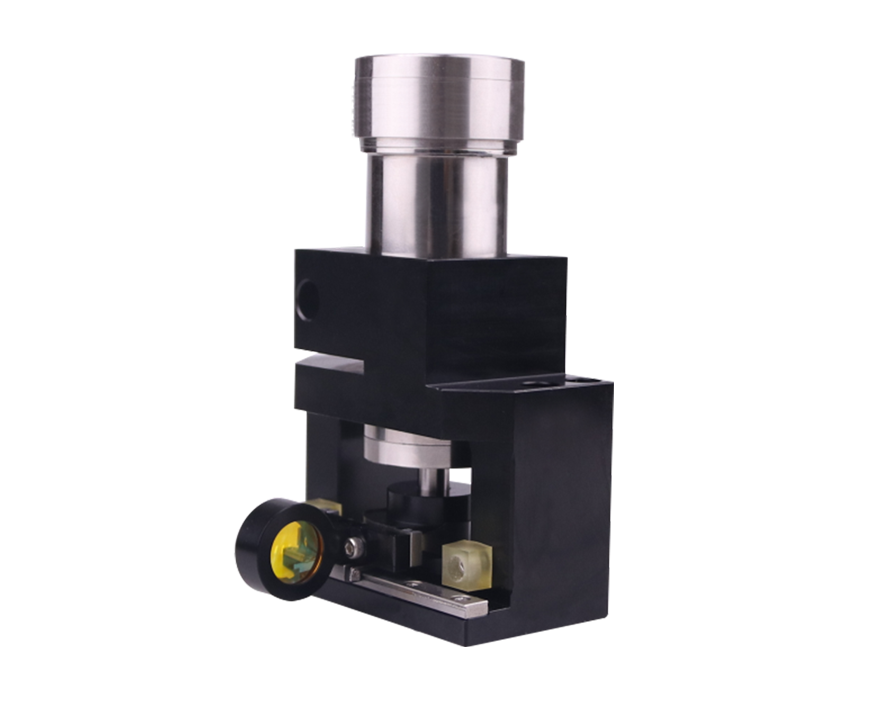The galvanometer scanner is composed of three parts: stator, rotor and detection sensor. Permanent magnets are used as the magnetic core for galvanometer scanning heads, and the detection sensor for capacitive sensors is modeled after the galvanometer. The digital galvanometer uses a grating ruler detection sensor. When the motor oscillates, the capacitance of the detection sensor undergoes a slight change, which is then converted into an electrical signal and fed back to the controller for closed-loop control. The grating ruler sensor measures the actual deflection point through the grating ruler, and then converts it into an electrical signal, which is fed back to the controller for closed-loop control. The moving-coil type is not used nowadays because the rotor is a coil, which is relatively large in size and has a large moment of inertia, which is not conducive to fast response. The moving-magnet type has a small volume and moment of inertia due to the tightly installed core pillar-shaped magnetic core on the rotating shaft, making it excellent for fast response.

The principle of the laser galvo:
The laser galvo is an essential component in laser micromachining that utilizes the principles of electromagnetic control to direct a high-powered laser beam accurately. The galvo system employs a pair of electromagnetic scanners, also known as scan heads, that control the laser beam's movement to achieve the desired outcome. When a position signal is input, the laser galvanometer will swing to a certain angle according to a certain conversion ratio of voltage and angle. The whole process uses closed-loop feedback control, with five control circuits, including a position sensor, an error amplifier, a power amplifier, a position differentiator, and a current integrator, working together. The principle of the digital laser galvanometer is to convert analog signals into digital signals based on the principle of the analog laser galvanometer.
An electric motor uses electromagnetic induction to transform energy through magnetic flux-carrying circuits and current-carrying circuits. When transforming energy, an electric motor must have two components that move relative to each other: the excitation component that establishes the excitation magnetic field, and the induced component, namely, the rotor and stator, respectively. A generator absorbs mechanical power from the mechanical system and outputs electrical power to the electrical system; an electric motor absorbs electrical power from the electrical system and outputs mechanical power to the mechanical system. During the energy transformation process inside an electric motor, electrical energy, mechanical energy, magnetic field energy, and thermal energy exist, of which thermal energy is due to energy loss inside the electric motor, and should be minimized during the design process. For the laser galvanometer, the input electrical energy from the power source is the sum of the energy stored in the coupling electromagnetic field, the internal energy loss of the motor, and the output mechanical energy; for the laser galvo, the input mechanical energy from the mechanical system is the sum of the energy stored in the coupling electromagnetic field, the internal energy loss of the motor, and the output electrical energy.
The fundamental requirement for the controller of a laser galvanometer: since the laser marking machine relies on the cooperation of X and Y deflections to reflect light onto the work surface for accurate engraving, the control of the laser galvanometer is done by a computer in open-loop control. Therefore, the relationship between the input signal and deflection point should be linear. Since the galvanometer is a high-speed precision mechanical device, a larger acceleration is needed to switch from one working condition to another.